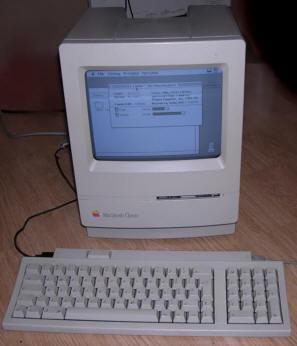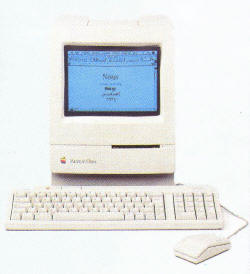Macintosh Classic
Macintosh Plus and SE were successful computers, but
many customers ignored Macs because of their high prices. Macintosh
computers were just too expensive for small offices or family companies.
In 1990 Apple decided to sell a cheap (under $1000) model without new
features, but still usable as office machine or teaching aid. Classic
was slightly redesigned Macintosh SE, with modified look, SuperDrive
1.44MB floppy disk and (in one of its configurations) internal non-Winchester (voice
coil moved) hard drive. Contrary to SE it had no expansion bus, and its
processor was, even as in 1990, slow. More, its system architecture made
CPU slower than in SE. Classic used a new Macintosh System 6.0.7 OS, and
it wasn't fast with it.
With Classics Apple included a new keyboard with ADB replicator inside
so using 2 ADB connectors in computer was not needed.
| Model No: | M1420 | |
| Year: | 1990 | |
| Discontinued: | 1992 | |
| CPU: | Motorola 68000 8MHz | |
| RAM: | 4MB | |
| Max. RAM: | 4MB | |
| RAM Type: | 30-pin SIMMs | |
| Hard disk: | 40MB SCSI, 3.5" SL | |
| Floppy drives: | 1 1.4M 3.5" | |
| Other drives: | None | |
| Graphics: | 512x342 monochrome | |
| Sound: | 1 8-bit/22kHz speaker | |
| Display: | Built-in 9" CRT | |
| Dedicated OS: | Mac System 6.07 | |
| Maximum OS: | Mac System 7.5.5 | |
| Expansions: | ADB. | |
|
Peripherals in collection: |
||
| Connectors: | - ADB
connector for keyboard and mouse - External floppy connector - External SCSI connector - 2 RS-422 serial ports (for printer and modem) - Mono Jack sound output. |
|
I bought my unit in Internet auction and I discovered that it comes from a school, but it was not much used and is in good shape.
.






